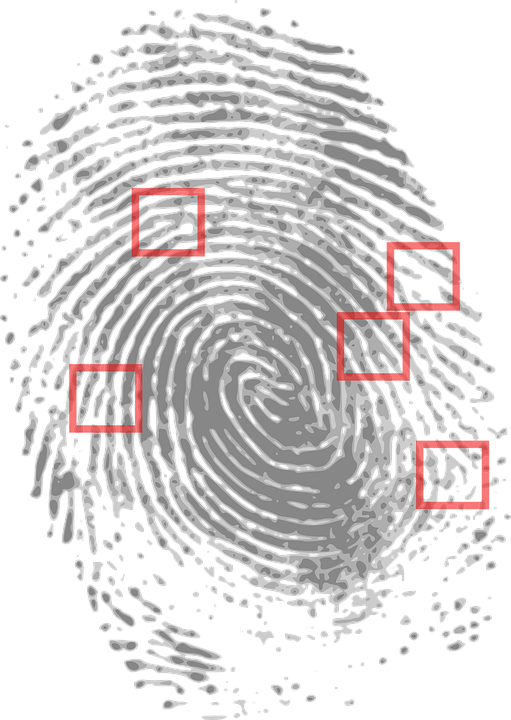Eyes on the Prize: Iris Scanning Explained

Iris scanners have long been a staple of super spy block busters and Hollywood heists. In the movies iris scanners are exceptionally high tech affairs, almost as expensive as the riches they’re designed to protect, relying on sweeping lasers and holographic overlays to thwart plucky thieves and rogue agents alike. In reality, iris scanners are…still pretty futuristic, though they’re far less expensive, and far more diverse, than their cinematic counterparts.

What is Iris Scanning?
Iris scanning and fingerprint scanning are identical in principle. Irises, like fingerprints, are all unique to each individual, containing thousands upon thousands of variances that can be mathematically compared and contrasted. The capture process, however, is where the two methods diverge. Unlike fingerprints, which are taken by physically rolling each fingertip across a scanning platen, irises are captured via near infrared camera, a process that is entirely touch and operator free. Irises and fingerprints can both then be submitted to their respective databases for processing, with potential matches returning from the FBI or DPS within minutes.

Who Uses Iris Scanning?
There are hundreds of ways to deploy iris recognition systems, with some uses more obvious than others. On a criminal and federal level, iris scanning acts as a natural extension of current fingerprinting and facial recognition efforts. The FBI Iris Pilot Program was labeled as a top biometric priority in the 2017 CJIS Year in Review, and processes over 18,700 submissions a month from agencies across the country. Iris scans are a faster, more secure, and more practical alternative to ID badges for checkpoints within secure areas, and significantly streamline prisoner release protocols without compromising on public safety.
But civilian applications are where the diversities of iris scanning can really shine. Most industries could benefit from a security boost, and biometrics, particularly instant, touch free biometrics, are being adopted across the world. Iris scanning protects and secures academic institutions such as CERN in Geneva, all 29 of the largest airports in Canada, and even high profile private vaults in Beverly hills. Aside from the obvious security applications, iris scans are a good way to keep track of an otherwise overwhelming workforce. The One World Trade Center used iris scanning to authenticate its 3000 workers for the duration of its construction, while El Salvador’s Ingenio Azucarero Injiboa mill uses iris recognition to manage payroll and accurately track employee hours across its 24/7 shift changes. The applications of iris are endless.

Why Use Iris Scanning?
No two biometric measures are quite alike, and while fingerprinting and iris recognition are similar, they fill very different niches, and often work best when used in tandem for dual verification and registration.
Right off the bat, iris scanning is much faster than fingerprinting. Unlike live scanning, which requires an operator with special training physically rolling the prints of a cooperative subject, iris scanning requires only a brief, touch free glance into an IR camera. At no point does the operator need to make contact with the person being scanned, and at no point does the person being scanned need to touch any potentially delicate or dirty equipment. In places like hospitals, secure/clean facilities, and even school cafeterias, touchless iris scanning is a much more efficient and hygienic option than fingerprinting.
This lack of contact with the equipment also prevents wear and tear that other contact scanners can accrue. There’s less maintenance, less cleaning, and no mandatory silicon pad or platen replacement. For heavily trafficked areas that require quick identification (rather than full enrollment), the cost of maintaining or replacing an iris scanner is considerably lower than a full live scan system. This isn’t to say an iris scanner can do everything a live scanner does, only that a live scanner isn’t always the best option for verification, especially for high speed, high volume demands.
Iris scanners are also immune to the most common confound in fingerprinting: fingerprints themselves. The eyes may be the window to the soul, but our fingers are the gateway to the world, and as such they get burned, bitten, scratched, and scraped regularly. The more you work with your hands, the harder it is for fingerprint scanners to capture your prints, which makes the processes of scanning them considerably more time consuming. This is fine for a once in a blue moon booking or background check, but trying to use a fingerprint scanner regularly quickly becomes a chore. Your irises, however, are well protected and (hopefully!) make no physical contact with the world. As a result, iris patterns remain perfectly preserved well into your golden years and are easy to read even if you’re an amateur carpenter that doesn’t like to wear safety gloves.
Finally, Iris scanning is a foregone conclusion in a world of facial recognition, increased identity legislation, and ever-present security breaches. While social security numbers can be stolen, birth certificates forged, and driver’s licenses faked, the eyes don’t lie, and that makes them the ideal key to a safer world. Additional biometric identity markers compound security in a way a password never could, and iris scanning in particular is fast and noninvasive.
Security is getting personal, from palms to fingers to faces, and Mentalix gives you the flexibility to choose which metric, including iris scanning, is right for you.
